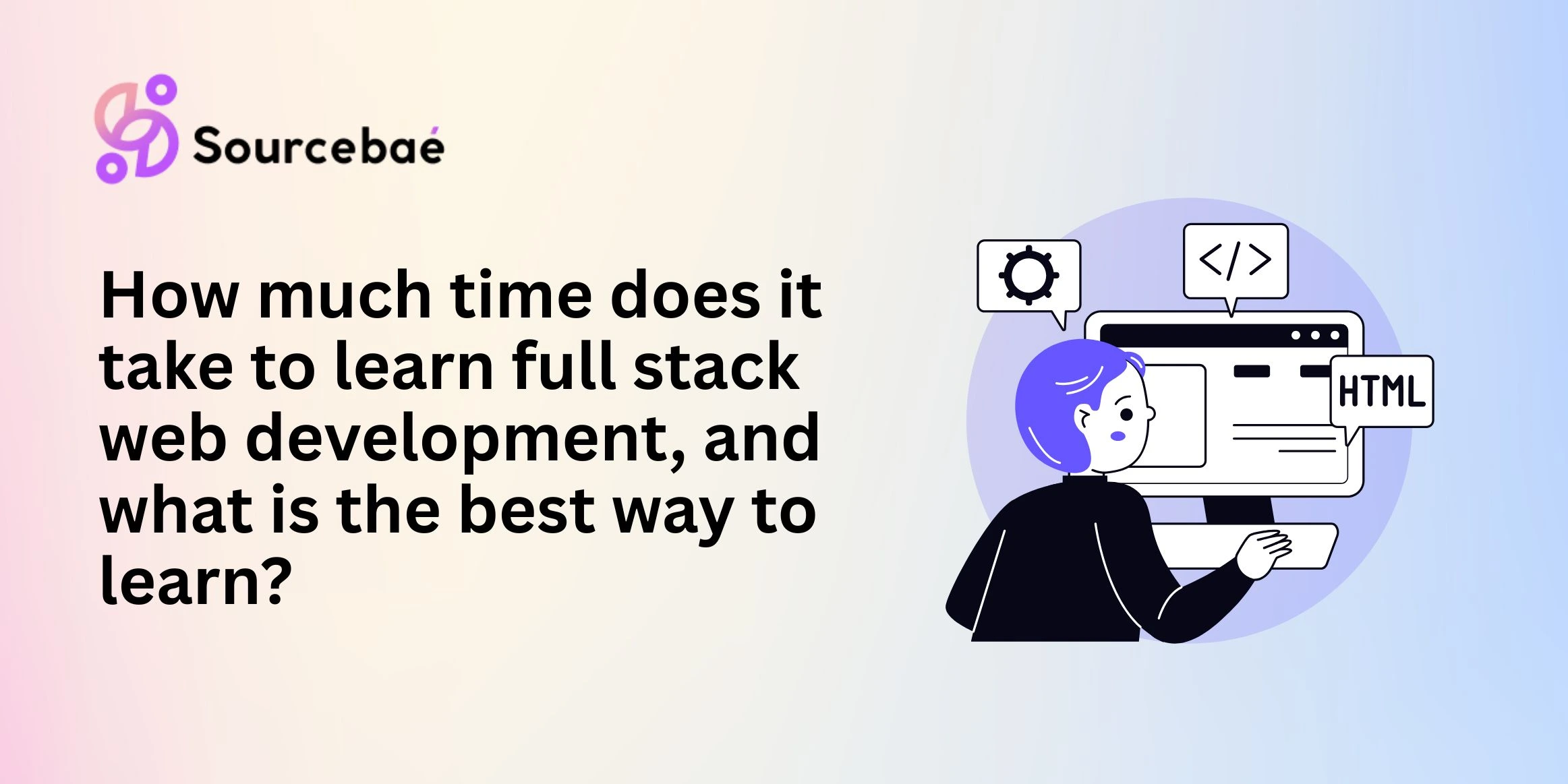Embarking on a journey to master full stack web development requires a strategic approach and a clear understanding of the time investment involved. In this comprehensive guide, we’ll delve into the optimal duration for achieving proficiency in full stack web development and the best strategies to enhance your learning experience.
Mastering the full stack of web development is a significant undertaking, and the time it takes can vary depending on several factors. Here, we break down the learning process and offer essential tips to expedite your progress.
The Learning Curve: A Personalized Journey
Embarking on a new skill like full stack web development is akin to starting a voyage. Everyone’s learning curve is unique, influenced by prior knowledge, dedication, and the chosen learning path. Understanding this curve is crucial to managing your expectations.
In general, dedicating 15-20 hours per week to learning full stack web development is a solid starting point. With consistent effort, you can expect to acquire the necessary skills and knowledge within 6-12 months.
Structured Learning: Formal Courses and Bootcamps
Structured learning environments, such as coding bootcamps and formal courses, offer a guided approach to learning full stack web development. These programs are designed to provide a comprehensive curriculum, mentorship, and a supportive community.
Opting for a reputable coding bootcamp can condense the learning period to as little as 14-24 weeks. Meanwhile, enrolling in a bachelor’s or associate degree program can take about 2-4 years.
Self-Paced Learning: Online Platforms and Resources
For those preferring a more flexible approach, self-paced learning through online platforms is an excellent option. Websites like Udemy, Coursera, and freeCodeCamp offer a wealth of tutorials and exercises, allowing you to progress at your own speed.
Self-paced learners typically invest 20-25 hours per week, and their learning journey may span between 12-18 months.
Immersive Learning: Project-Based Practice
Immersing yourself in real projects is a powerful learning method. Engage in building websites, applications, or contributing to open-source projects. Practical application of your knowledge deepens your understanding and proficiency.
A dedicated focus on practical projects can shorten the learning period to approximately 12-16 months.
Mentorship: Guided Learning and Feedback
Having a mentor can significantly accelerate your learning. A mentor provides guidance, reviews your code, and offers insights based on their experiences. Their expertise can help you navigate challenges more efficiently.
With a mentor’s guidance, you can potentially cut down your learning time to 10-14 months.
Consistency and Perseverance: Keys to Success
Regardless of your chosen learning path, consistency and perseverance are non-negotiable. Set achievable goals, stay disciplined, and celebrate your progress along the way. This approach will ensure a steady and successful journey to mastering full stack web development.
Adapting and Evolving: Lifelong Learning Mindset
In the ever-evolving field of web development, the learning doesn’t stop once you’ve achieved mastery. Embrace a mindset of continuous learning and growth, staying updated with the latest technologies and trends.
FAQs
How do I stay motivated throughout the learning process?
Maintaining motivation is crucial. Join online communities, set small achievable goals, and remind yourself of the exciting opportunities that a career in web development can offer.
Are there any prerequisites for learning full stack web development?
While not mandatory, having a basic understanding of programming concepts and familiarity with HTML, CSS, and JavaScript can give you a head start.
Is a degree necessary to become a proficient full stack web developer?
No, a formal degree is not a prerequisite. Practical experience, a strong portfolio, and showcasing your skills are often equally, if not more, important to potential employers.
What are the most in-demand programming languages for full stack development?
JavaScript, Python, Ruby, and Java are highly sought after in the full stack web development landscape. Tailoring your learning to these languages can enhance your job prospects.
How can I enhance my problem-solving skills during the learning process?
Regularly engage in coding challenges and exercises. Platforms like LeetCode and HackerRank offer a plethora of problems to tackle, helping sharpen your problem-solving abilities.
How can I transition into a career in full stack web development after learning?
Build a strong portfolio showcasing your projects, participate in hackathons, network with professionals, and consider internships to gain practical experience and open doors to potential job opportunities.
Conclusion
Mastering full stack web development is an attainable goal with the right approach and dedication. Tailor your learning style to suit your preferences, stay consistent, and never stop exploring and expanding your skill set. Your journey into the exciting world of web development awaits.
Read More:






